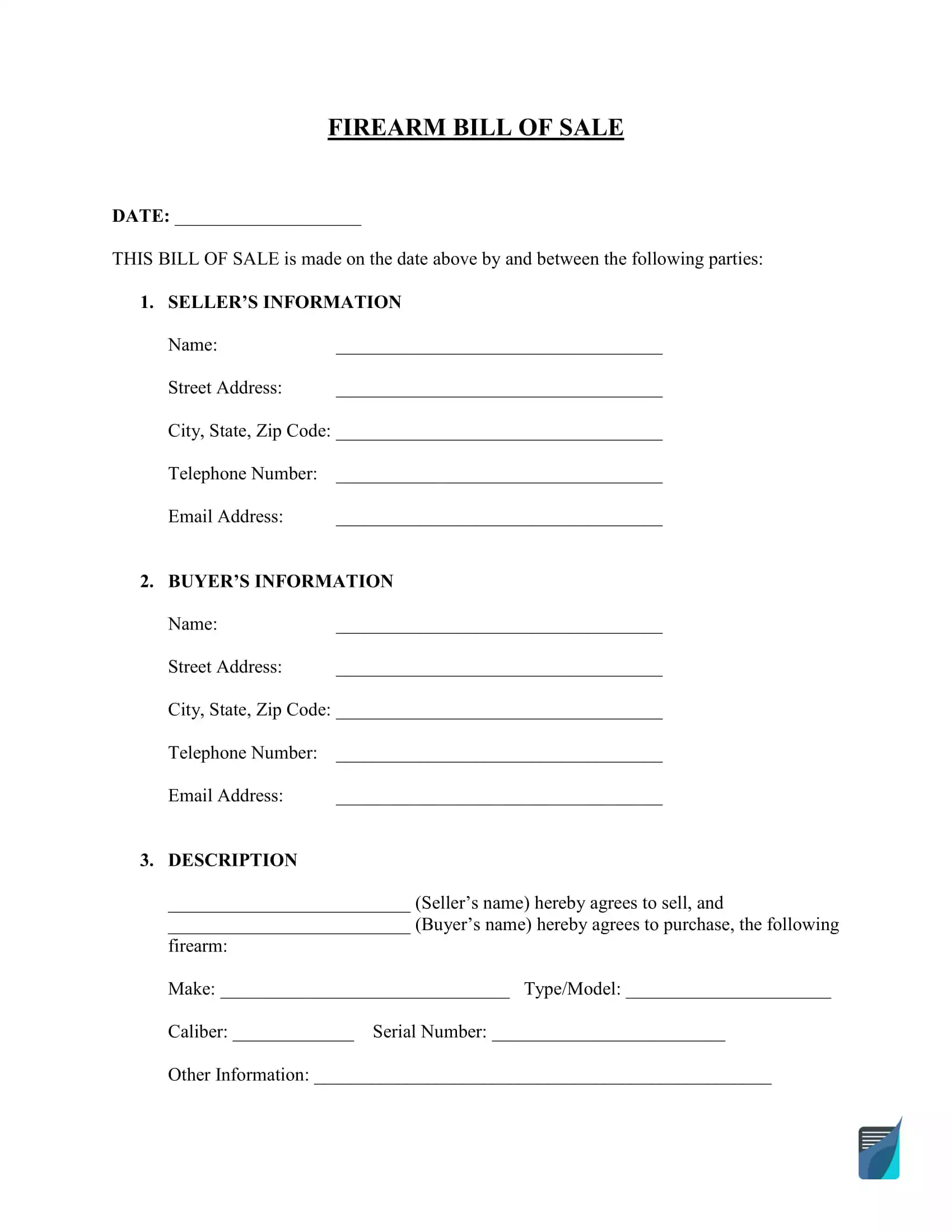Firearm Bill of Sale Form
A firearm bill of sale is a legal paper used when buying or selling a gun. This document helps to make the sale official and legal. Often, people who want to buy or sell a gun privately will use this form before the gun changes hands.
The bill of sale includes important information like the signatures and names of both the buyer and seller, the date of the sale, and details about the gun. This form acts as a receipt, showing that the sale happened. It helps protect both the buyer and seller, ensuring the deal is fair and clear.
Why Use a Firearm Bill of Sale?
A firearm bill of sale is very important when buying or selling a gun in a private sale. This paper has all the details of the sale and describes the gun. It helps track who owned the gun and when. This is important because guns can be used in ways that are not right or legal. If anything like that happens, the bill of sale can help find out who the owner is. This paper also ensures both the buyer and seller do what they agreed to.
For the person selling the gun, the bill of sale keeps track of how much money was paid and when. It also makes it clear that the seller is no longer responsible for the gun once the sale is done.
For the person buying the gun, the bill of sale shows that they are the new owner of the gun. If there are any disagreements or problems later, the bill of sale can be used to help sort things out.
Firearm Bill of Sale Form Details
| Document Name | Firearm Bill of Sale Form |
| Other Name | Gun Bill of Sale |
| Relevant Link | Bureau of Alcohol, Tobacco, Firearms and Explosives; Information on Carrying Firearms |
| Avg. Time to Fill Out | 12 minutes |
| # of Fillable Fields | 66 |
| Available Formats | Adobe PDF; Microsoft Word |
Do I Need a Federal Firearms License (FFL)?
If you are operating a weapon-selling business, you must have a Federal Firearms License to manufacture, sell, or transport the guns. It has specific terms and conditions that all sellers must follow. For instance, they have to carry out due diligence and perform background checks on the customers before any sale is finalized.
However, this license exempts gun owners who want to sell their weapons on an individual basis. You have to check the state law before you undertake any transaction.
How Do I Sell My Firearm?
It is quite challenging to sell a firearm, especially if you are not conversant with the procedure and gun laws. If you want to sell your gun and are stuck on where to begin, follow the simple guide below:
Step 1. Research Gun Laws
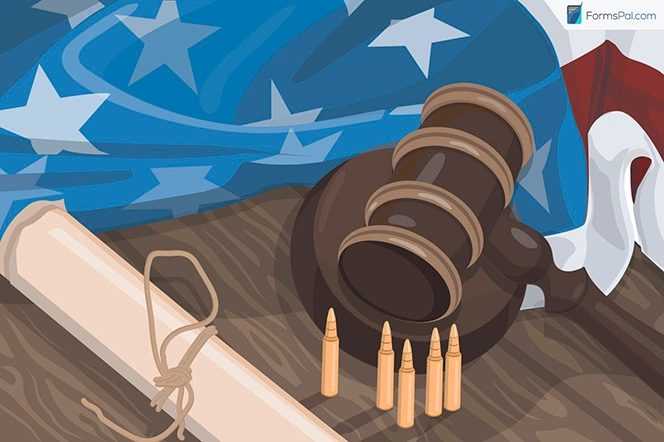
Ensure that you gain knowledge about the gun laws in your state. It is very crucial since it governs the terms of the transaction. In other states, buyers need a permit, while others require you to pass through a licensed dealer. Thus, ensure that you are within the law before putting your rifle up for sale. Follow the current affairs within the local, state, or federal law to know if there are any law amendments.
Step 2. Sell to a Trustworthy Customer
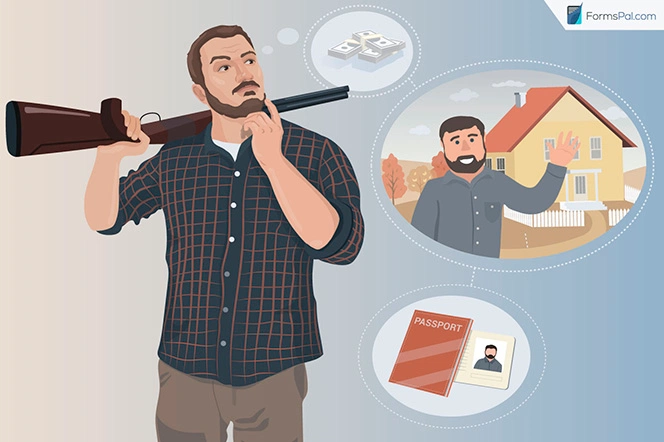
When scouting for a customer, a firearm seller cannot openly advertise private gun sales on social media networks. Although law-abiding citizens in most states can become licensed gun owners, the process of procuring it must be legal. Therefore, exercise caution before finalizing the transaction if you are selling your gun. How well do you know the person buying your gun? It is advisable to sell your weapon to trustworthy individuals such as close neighbors, friends, and family.
If the prospective buyer is a stranger, ensure that you are vigilant. Verify the identity of the individual through physical documents such as identification cards, driving license, and physical address. Most of all, trust your gut feeling about the person’s character. If it is off, walk away from the deal. You might be making a deal with a convict without your knowledge and get in trouble with the relevant authorities.
Step 3. Double-Check the Buyer
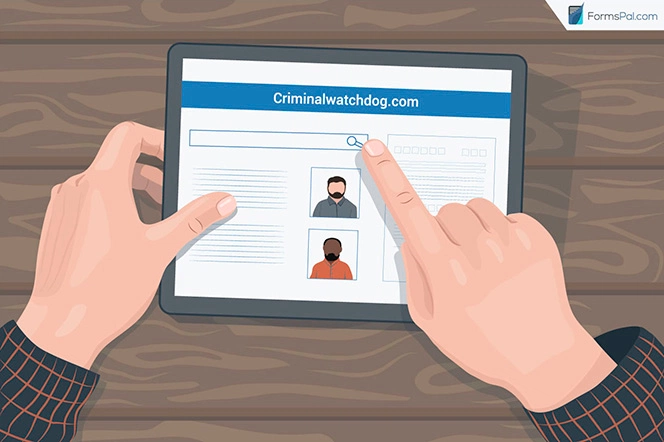
Nothing is more important in a private gun sale than performing a background check on potential buyers. The crime rate is on the rise, and you may be selling your weapon to a criminal without your knowledge. Hence, it is crucial to conduct thorough due diligence before signing an agreement. Several criminal background search portals will reveal whether the person has a clean record. For instance, check criminalwatchdog.com or other reliable sites. Though you will pay a small fee, it does not compare to getting yourself entangled with a criminal.
Also, verify that the buyer possesses a valid concealed carry permit or is otherwise legally permitted to own a firearm if required by local laws.
Step 4. Negotiate the Purchase Price
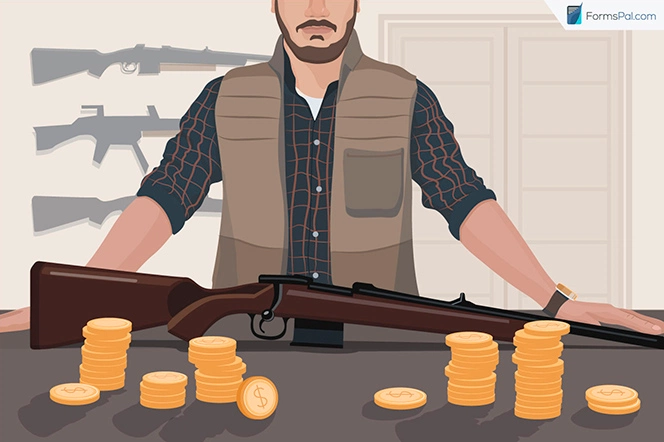
You can proceed to the negotiation table when you are sure about the buyer. Lay down your terms, such as price, mode of payment, and installments, if any. You need to come up with a reasonable price depending on the model of the weapon and the current market price. Do not put up high prices that might scare away prospective buyers.
Step 5. Draft a Firearm Bill of Sale
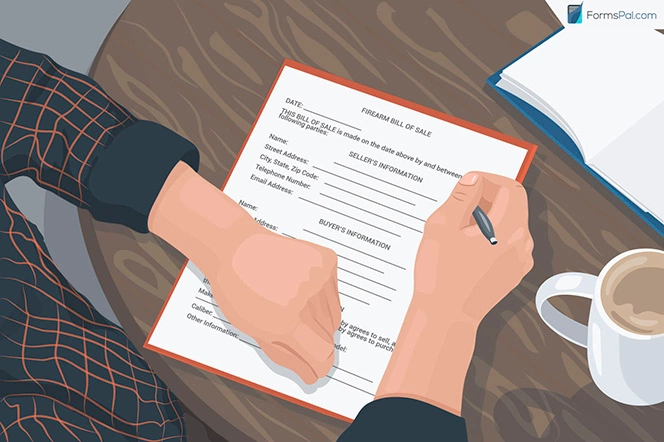
After negotiations and reaching a consensus with the potential buyer, you can now complete the firearm bill of sale form. However, customers must sign a disclaimer that withdraws liability from the seller if the weapon is used for criminal offenses. You also need to prove that you can acquire the gun.
We shall discuss the details of how to write a firearm bill of sale below.
Step 6. Meet the Prospective Buyer

After both parties fill out the purchase agreement, the transfer of ownership can be finalized. The buyer sets up a meeting for the final transaction. The seller must have the gun in place, and the buyer must be ready to make the payment. The exchange occurs, and the deal is sealed. Neither party owes each other anything else at this point.
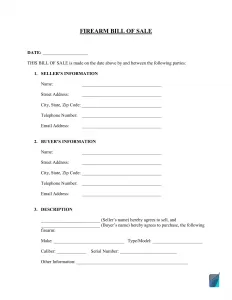
How to Write a Firearm Bill of Sale
1. Download the Form
Download the relevant template for the firearm bill of sale. Get a convenient format that works well for you, for instance, Microsoft Word, PDF, or Open Document Text.
2. Identify the Parties Involved
Both parties of the deal must provide valid documentation for a seamless transaction and record-keeping purposes. The details include:
- Full name of the buyer.
- Full name of the seller.
- Valid address, city, and state information
- Government ID card, driving license, or passport number

3. Outline the Details of the Sale
Here you have to describe the firearm in detail. Ensure that all of the information is correct:
- Make
- Model
- Caliber
- Serial number
You also have to indicate the purchase price of the firearm in this section. There is a blank space where the seller is accepting a particular amount of money. The agreement shows that the seller commits to pay the said amount at a specific date. It also displays the sale date.
For instance, you can include several clauses here if the seller intends to pay in installments or at a future date.

4. Seller and Buyer Sign a Disclosure Agreement
Both parties must sign a disclosure to reveal their true intentions for the sale. The disclosure statements must be verified as valid before finalizing the firearm sale.
Let us have a closer look at a few of the disclosure statements:
- The buyer is above the legal age and licensed to own a gun.
- They have a clean record without any convictions.
- They are law-abiding citizens with valid IDs.
- They can possess a firearm legally under government laws.
These are just a few, and many more disclosure statements exist that prospective buyers can declare on the firearm bill of sale. Then, the buyer has to finish off by adding their full name and signature.
The seller has to declare the sale disclosure as well. It acts as proof that the transaction is legal without any hidden agendas. After both parties sign, the firearm bill of sale can now be executed.
Two witnesses must be available to ascertain the transaction. Moreover, they have to append their names and signatures to the firearm bill of sale.
The buyer can now make payments and obtain the gun legally. If there are no pending issues, the deal can be finalized.
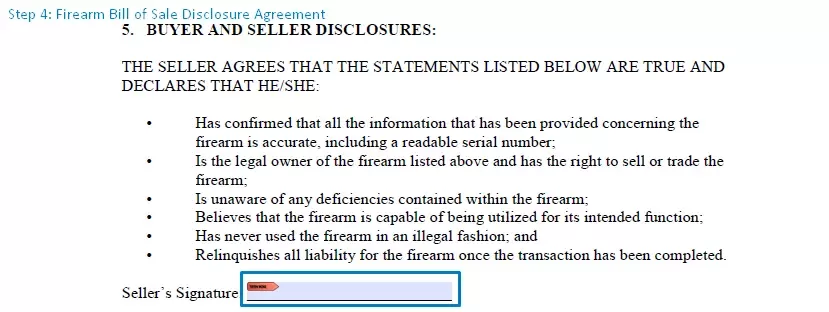
5. Acknowledgment Certificate
At this stage, both parties need to have a Certificate of Acknowledgment from a legal representative. It is also a critical document since it is adequate proof that the sale was successful.
Ensure you issue the customer a copy of the firearm bill of sale for record-keeping services. As a seller, you also need to file your copy in a safe place. You never know what issues may arise in the future. So, to be on the right side of the law, ensure that the purchase agreement is available after the transaction is finalized.


